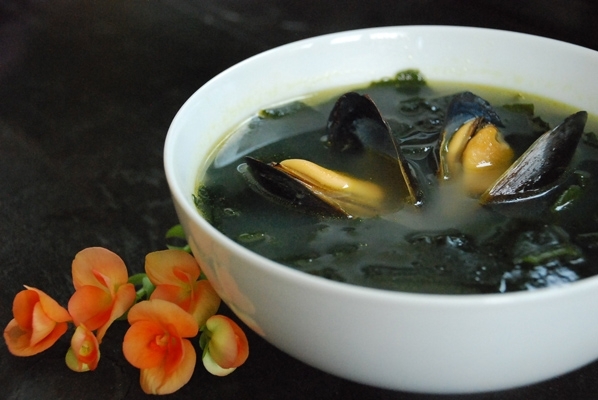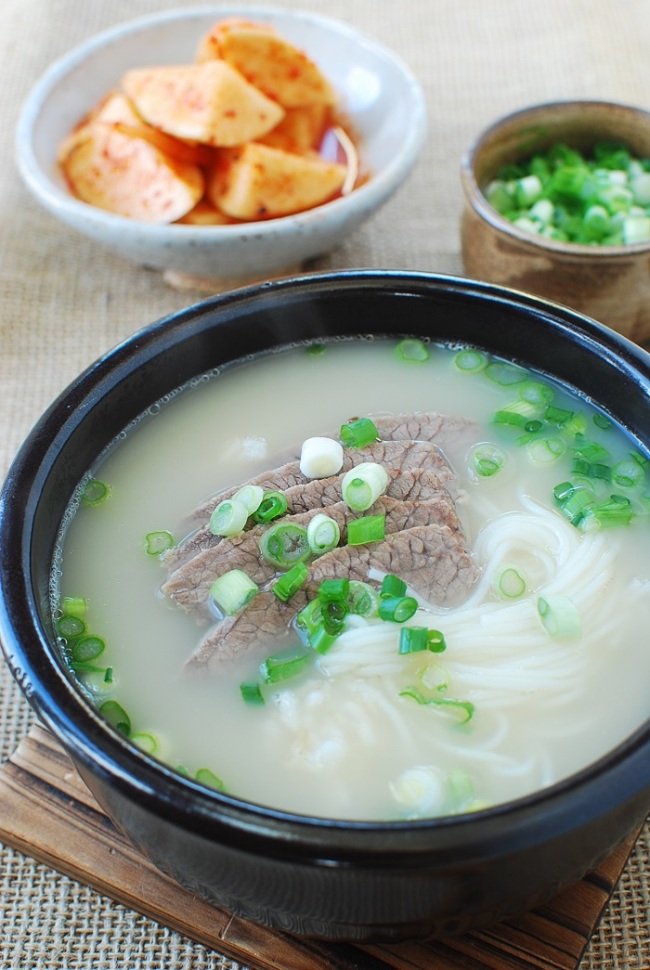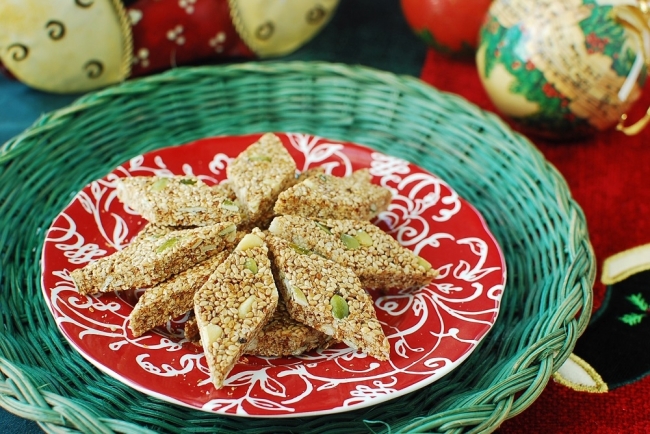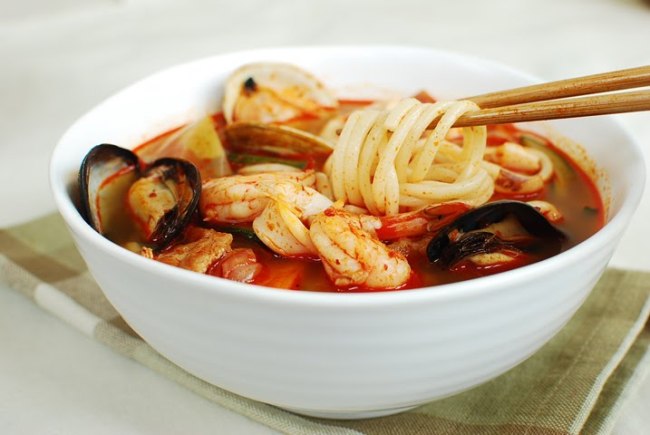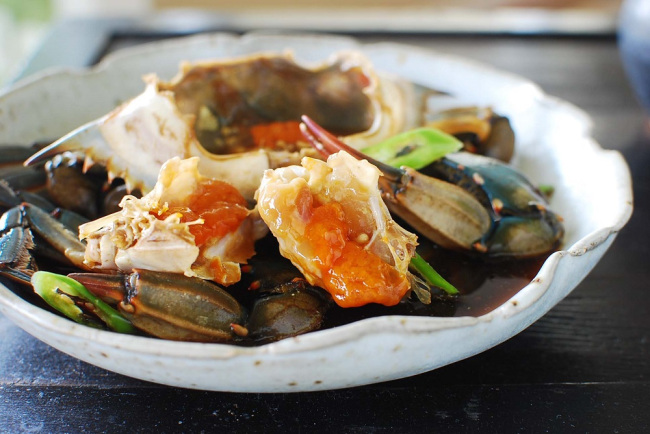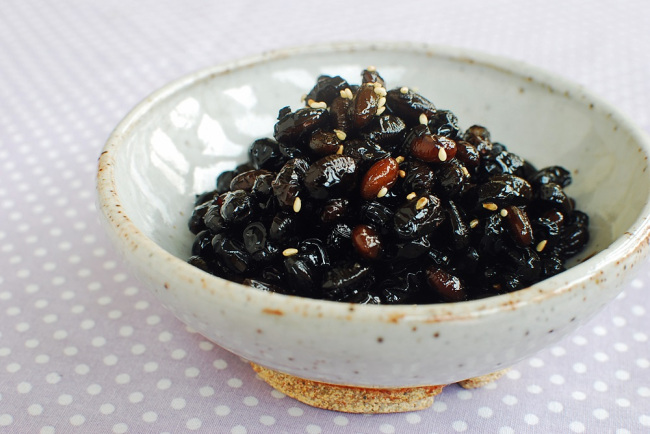Dakgaejang is a variation of yukgaejang that is made with chicken. Yukgaejang is a popular spicy soup made with shredded beef and lots of scallions and other vegetables. The chicken version is traditionally made with boiled chicken. However, I often make it with leftovers of a roasted whole chicken (store-bought or homemade) or turkey. Those leftover bones are perfect for making stock. So, here’s how to make a delicious, spicy soup with chicken or turkey leftovers.
4 servings
Ingredients:
● 8 cups chicken/turkey stock (see below for recipe)
● 2 cups (or more) cooked chicken/turkey meat, shred into bite sizes
● 1-2 bunches scallions
● 200 grams sukjunamul (mung bean sprouts)
● 3 dry shiitake mushrooms, soaked until plump (use more if using fresh mushrooms)
● 2 tablespoons gochugaru (red chili pepper flakes)
● 2 tablespoons sesame oil
● 1 tablespoon gochujang (red chili pepper paste)
● 3 tablespoons guk ganjang (soup soy sauce)
● 2 teaspoons minced garlic
● Salt and pepper to taste
Pull the meat from the bones and shred into thin strips.
Blanch the bean sprouts in boiling water for a minute. Drop them in cold water, and drain. Cut the scallions into about 10-centimeter lengths. Thinly slice the mushrooms.
In a sauce pan, heat the sesame oil until hot (but not smoking hot) over low heat. Add the chili pepper flakes, and turn the heat off. Stir gently until the oil turns red and the chili pepper flakes become pasty. Do not burn the flakes.
Add the meat, bean sprouts, mushrooms, 1 tablespoon of soup soy sauce, and garlic to the sesame oil mixture and mix well. Marinate for 10 to 15 minutes.
Bring the stock to a boil in a large pot. Add the meat and vegetables into the stock. Stir in the gochujang and 2 tablespoons of soup soy sauce. Cook for 5 minutes over medium-high heat.
Throw in the scallions. Continue to boil for an additional 3-4 minutes. Add salt and pepper to taste. Serve with a bowl of rice.
Quick chicken/turkey stock:
● Remains of roasted chicken/turkey
● 1/2 medium onion, halved and peeled 1 bay leaf
● 3-4 garlic cloves
Remove as much meat as possible from the chicken/turkey carcass, and save to use in the soup. Put the chicken/turkey remains in a large stock pot and fill with water to sufficiently cover the bones. Break up the bones if they are too big to fit in the pot. Bring to a boil over medium-high heat and skim off any foam. Add the remaining ingredients, reduce the heat to medium-low and simmer, covered, for about an hour (longer if desired). Cool and pour through a strainer into a large bowl. You can use a fat separator to remove the fat, or keep it in the fridge until the fat solidifies and then spoon it off.




